|
|
|

|
|||||

|
|

HVAC and electrical contractor Comfort Systems (NYSE:FIX) reported Q2 CY2025 results beating Wall Street’s revenue expectations, with sales up 20.1% year on year to $2.17 billion. Its GAAP profit of $6.53 per share was 36.6% above analysts’ consensus estimates.
Is now the time to buy Comfort Systems? Find out by accessing our full research report, it’s free.
Brian Lane, Comfort Systems USA’s President and Chief Executive Officer, said, “Our businesses and their stellar teams continue to demonstrate world class performance, as we achieved earnings that far surpass all prior quarters. Per share earnings in the second quarter of 2025 was $6.53, more than 70% higher than the spectacular results we achieved in the second quarter of 2024. For the first half of 2025, our per share earnings have grown by over 75% as compared to the record results in the same period of 2024. This quarter, we are also happy to report strong operating cash flow of over $250 million.”
Formed through the merger of 12 companies, Comfort Systems (NYSE:FIX) provides mechanical and electrical contracting services.
Examining a company’s long-term performance can provide clues about its quality. Any business can experience short-term success, but top-performing ones enjoy sustained growth for years. Thankfully, Comfort Systems’s 21.8% annualized revenue growth over the last five years was incredible. Its growth surpassed the average industrials company and shows its offerings resonate with customers, a great starting point for our analysis.
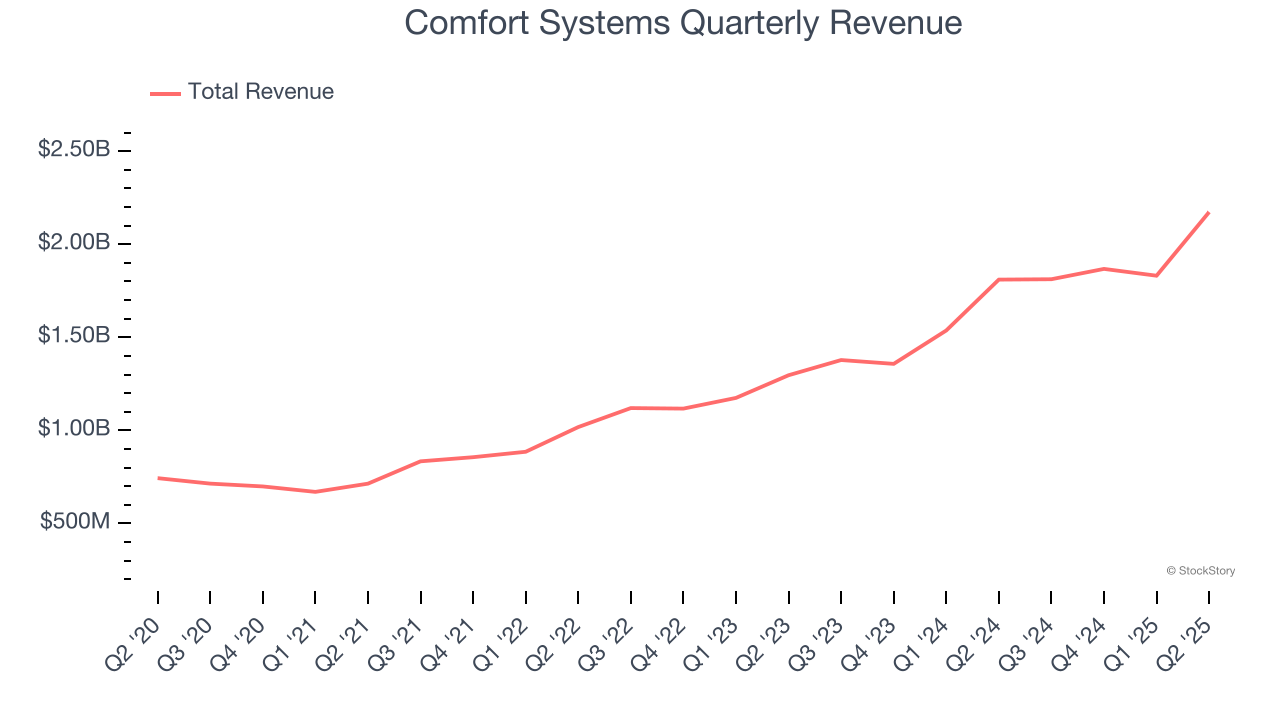
We at StockStory place the most emphasis on long-term growth, but within industrials, a half-decade historical view may miss cycles, industry trends, or a company capitalizing on catalysts such as a new contract win or a successful product line. Comfort Systems’s annualized revenue growth of 27.8% over the last two years is above its five-year trend, suggesting its demand was strong and recently accelerated.
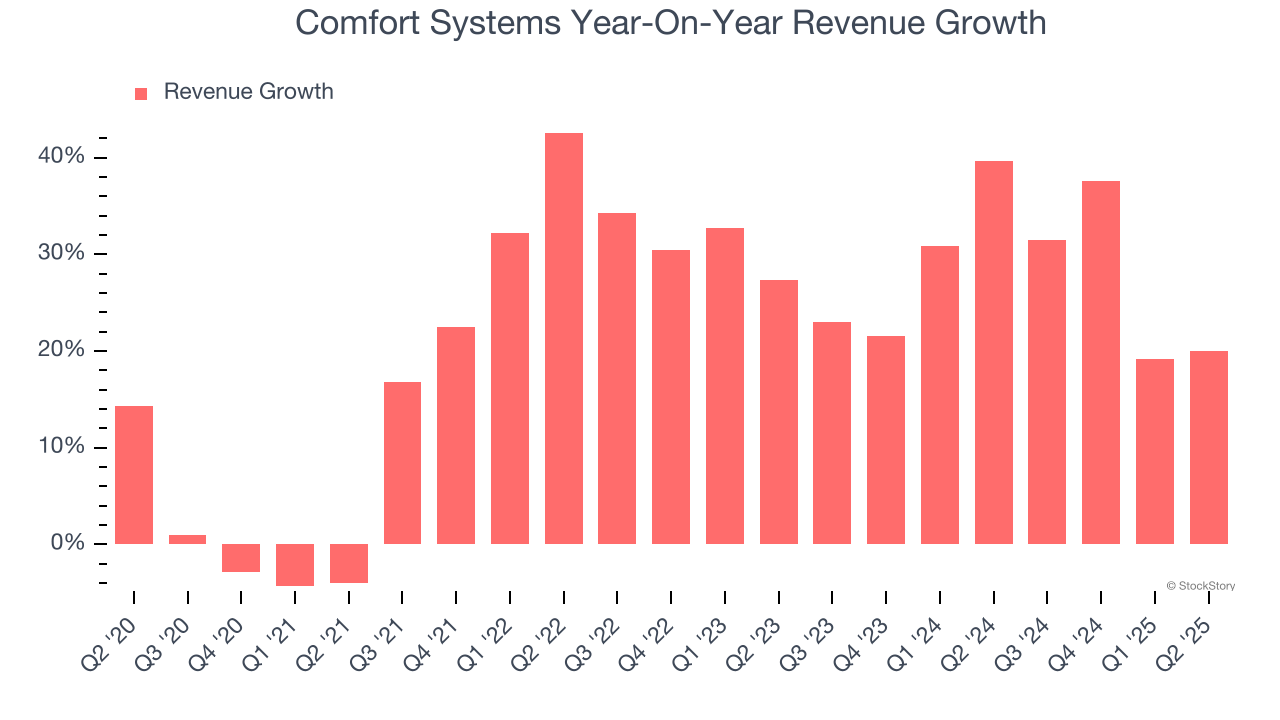
We can better understand the company’s revenue dynamics by analyzing its backlog, or the value of its outstanding orders that have not yet been executed or delivered. Comfort Systems’s backlog reached $8.12 billion in the latest quarter and averaged 29.5% year-on-year growth over the last two years. Because this number is better than its revenue growth, we can see the company accumulated more orders than it could fulfill and deferred revenue to the future. This could imply elevated demand for Comfort Systems’s products and services but raises concerns about capacity constraints.
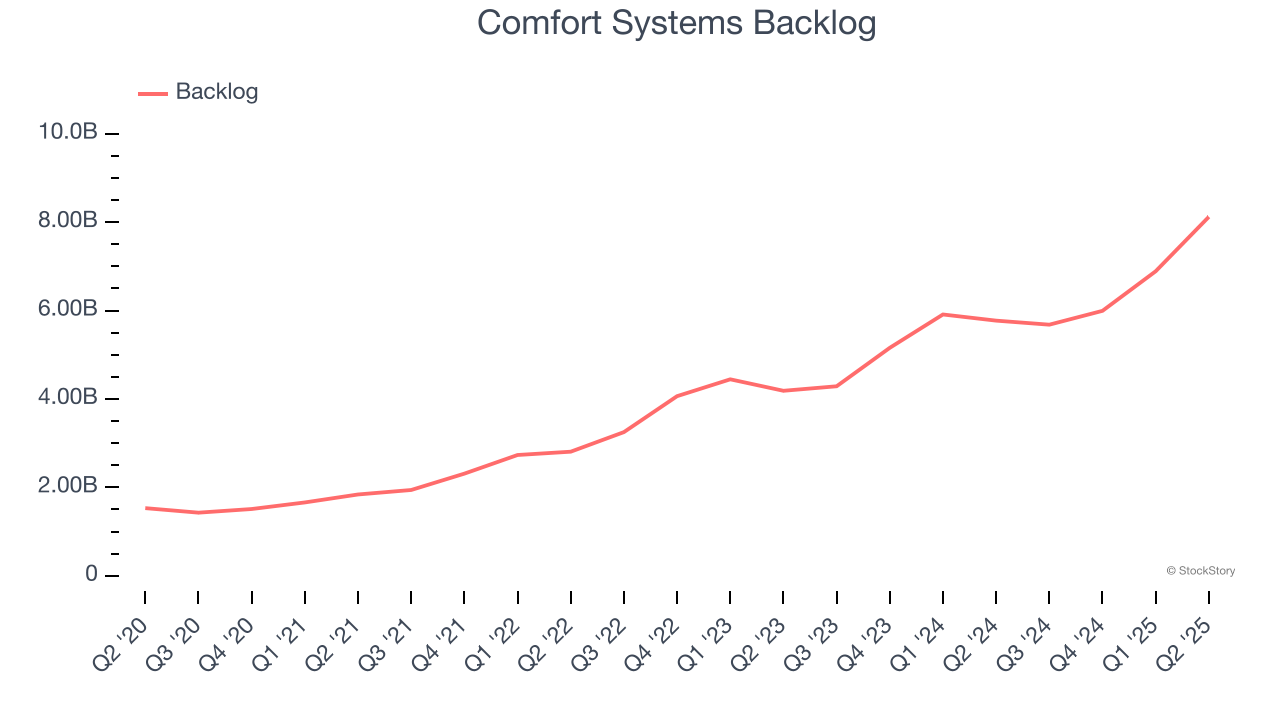
This quarter, Comfort Systems reported robust year-on-year revenue growth of 20.1%, and its $2.17 billion of revenue topped Wall Street estimates by 10.6%.
Looking ahead, sell-side analysts expect revenue to grow 3.8% over the next 12 months, a deceleration versus the last two years. This projection is underwhelming and indicates its products and services will face some demand challenges. At least the company is tracking well in other measures of financial health.
Unless you’ve been living under a rock, it should be obvious by now that generative AI is going to have a huge impact on how large corporations do business. While Nvidia and AMD are trading close to all-time highs, we prefer a lesser-known (but still profitable) stock benefiting from the rise of AI. Click here to access our free report one of our favorites growth stories.
Comfort Systems has done a decent job managing its cost base over the last five years. The company has produced an average operating margin of 8.9%, higher than the broader industrials sector.
Looking at the trend in its profitability, Comfort Systems’s operating margin rose by 5.8 percentage points over the last five years, as its sales growth gave it immense operating leverage.
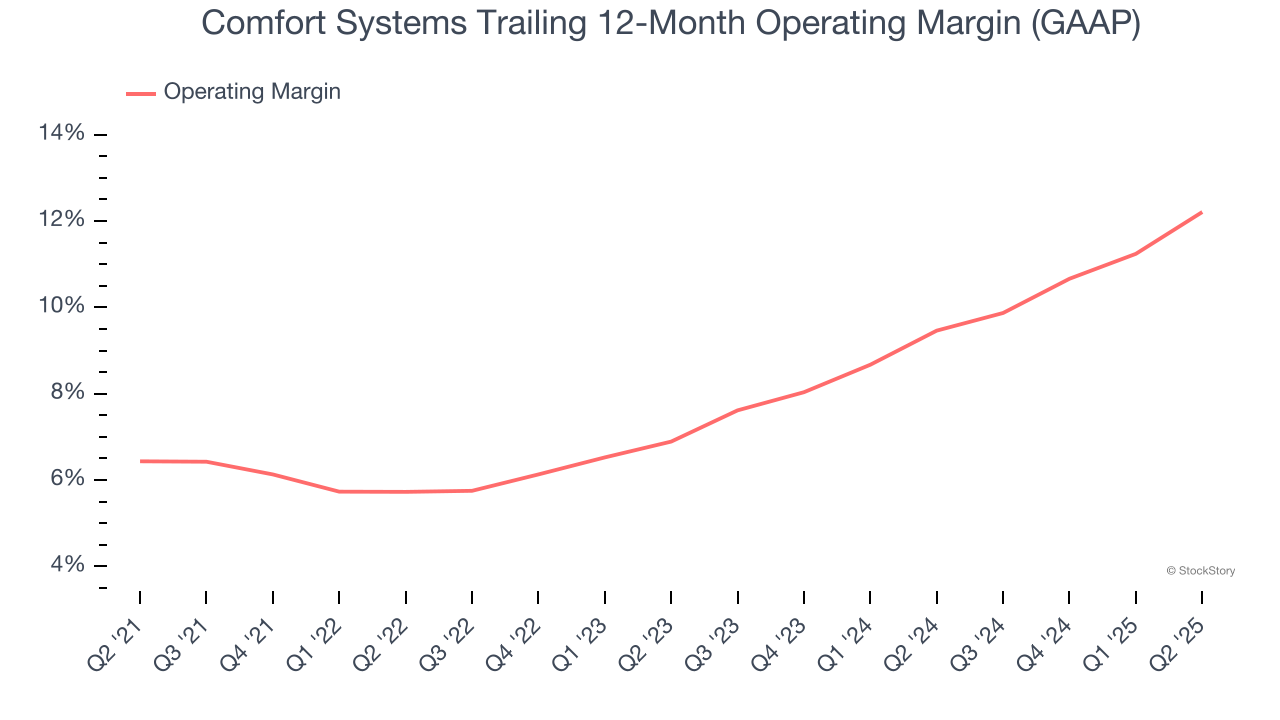
This quarter, Comfort Systems generated an operating margin profit margin of 13.8%, up 3.6 percentage points year on year. The increase was encouraging, and because its operating margin rose more than its gross margin, we can infer it was more efficient with expenses such as marketing, R&D, and administrative overhead.
Revenue trends explain a company’s historical growth, but the long-term change in earnings per share (EPS) points to the profitability of that growth – for example, a company could inflate its sales through excessive spending on advertising and promotions.
Comfort Systems’s EPS grew at an astounding 41.3% compounded annual growth rate over the last five years, higher than its 21.8% annualized revenue growth. This tells us the company became more profitable on a per-share basis as it expanded.
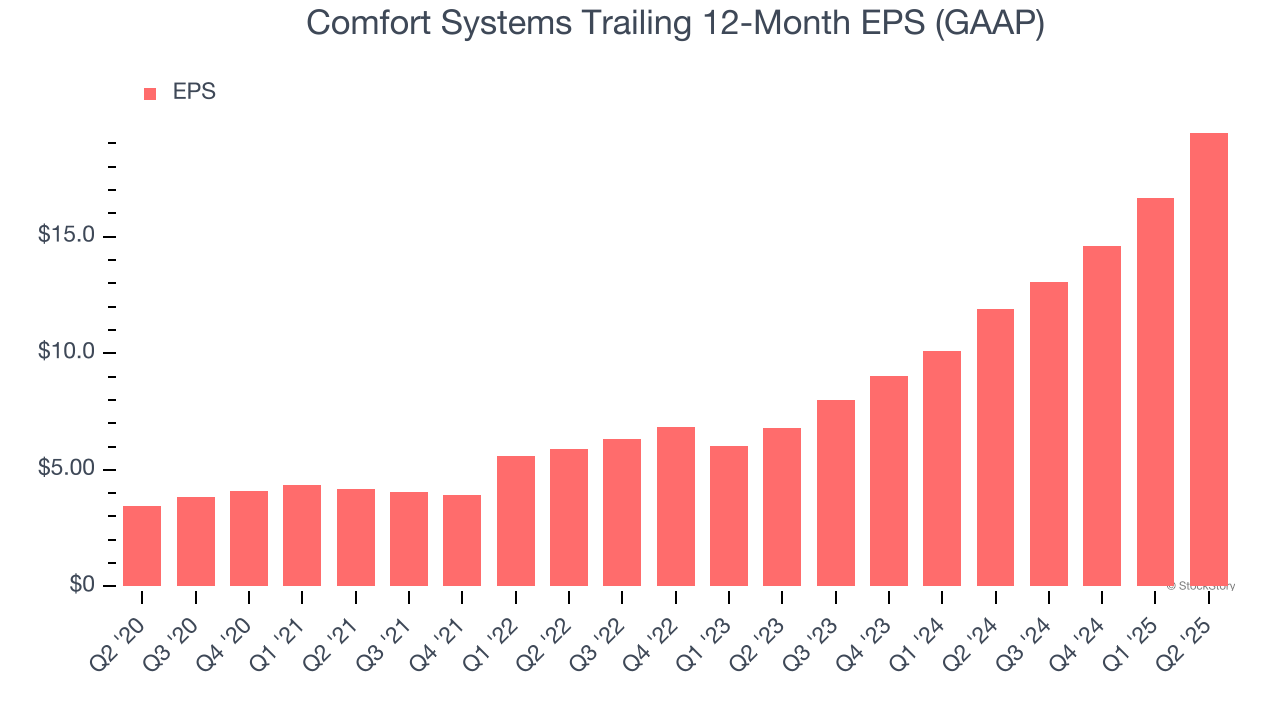
Diving into Comfort Systems’s quality of earnings can give us a better understanding of its performance. As we mentioned earlier, Comfort Systems’s operating margin expanded by 5.8 percentage points over the last five years. On top of that, its share count shrank by 3.7%. These are positive signs for shareholders because improving profitability and share buybacks turbocharge EPS growth relative to revenue growth.
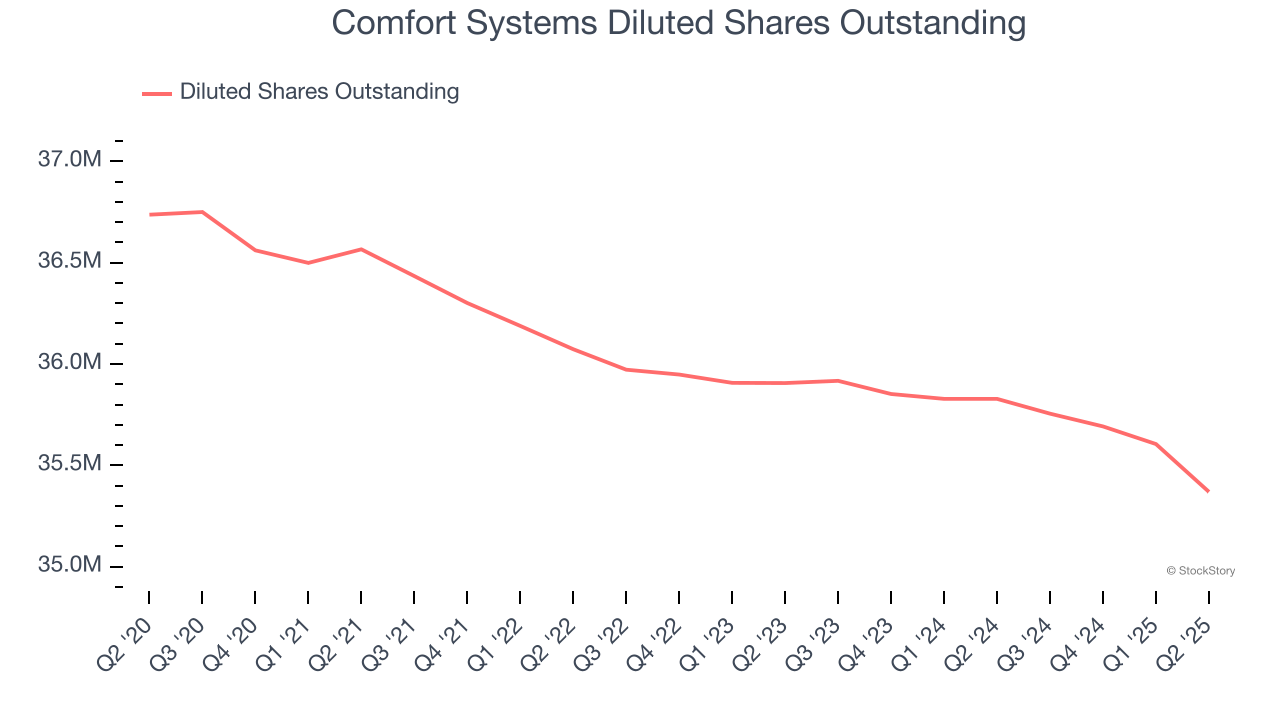
Like with revenue, we analyze EPS over a shorter period to see if we are missing a change in the business.
For Comfort Systems, its two-year annual EPS growth of 69.4% was higher than its five-year trend. We love it when earnings growth accelerates, especially when it accelerates off an already high base.
In Q2, Comfort Systems reported EPS at $6.53, up from $3.74 in the same quarter last year. This print easily cleared analysts’ estimates, and shareholders should be content with the results. Over the next 12 months, Wall Street expects Comfort Systems’s full-year EPS of $19.46 to grow 1.3%.
We were impressed by how significantly Comfort Systems blew past analysts’ backlog expectations this quarter. We were also excited its revenue and EPS both outperformed Wall Street’s estimates by a wide margin. With regards to negatives, there was not much to pick on. Zooming out, we think this was a solid print. The stock traded up 13.7% to $639.97 immediately after reporting.
Comfort Systems may have had a good quarter, but does that mean you should invest right now? We think that the latest quarter is only one piece of the longer-term business quality puzzle. Quality, when combined with valuation, can help determine if the stock is a buy. We cover that in our actionable full research report which you can read here, it’s free.
| Dec-05 |
Carvana, Comfort Systems, CRH To Join S&P 500 Index. The Stocks Are Jumping.
FIX
Investor's Business Daily
|
| Dec-05 | |
| Dec-05 | |
| Dec-05 | |
| Dec-05 | |
| Dec-05 |
Carvana, Comfort Systems To Join S&P 500 Index. The Stocks Are Breaking Out.
FIX
Investor's Business Daily
|
| Dec-05 |
How To Use The Accumulation/Distribution Rating To Find Stock Market Leaders
FIX
Investor's Business Daily
|
| Dec-05 | |
| Dec-05 | |
| Dec-04 | |
| Dec-03 | |
| Dec-03 | |
| Dec-02 | |
| Dec-02 | |
| Nov-28 |
Join thousands of traders who make more informed decisions with our premium features. Real-time quotes, advanced visualizations, backtesting, and much more.
Learn more about FINVIZ*Elite